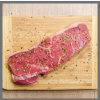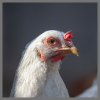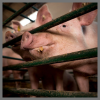-

Jun
29
Interpretive Summary: Supreme Court rules on WOTUS

The United States Supreme Court recently published a ruling on Sackett v. Environmental Protection Agency, involving the “Waters of the United States” (WOTUS) under the Biden Administration’s revised Clean Water Act. The ruling limits the authority of the Environmental Protection Agency (EPA) in regulating certain bodies of water that qualify as WOTUS. This is a huge win for farmers and landowners.
Read more
-

Jun
29
Interpretive Summary: Study finds carbon footprint of lab-grown beef might be worse than real beef

A new preprint article from researchers at The University of California, Davis (UC Davis) has found that lab-grown meat’s environmental impact is likely to be higher than retail beef based on current and near-term production methods. Lab-grown meat is growing in popularity. It is cultured from animal cells and is often thought to be more environmentally friendly than beef due to the need for less land, water, and greenhouse gases compared to raising cattle.
Read more
-

Jun
29
Interpretive Summary: SAVE Act is introduced

The Safeguarding American Value-Added Exports Act (SAVE Act) was recently introduced in the House and Senate, to protect American food products from foreign trade practices.
Read more
-

Jun
29
Interpretive Summary: New bill would support ag education at community colleges

A new bill introduced by Senators John Hickenlooper (D-CO), Deb Fischer (R-NE), Amy Klobuchar (D-MN), Todd Young (R-IN), Tammy Baldwin (D-WI), and Roger Wicker (R-MS) would fund community college workforce training, education, and research programs in agriculture.
Read more
-

Jun
29
Interpretive Summary: NAMI launches the Protein PACT Academic Advisory Council

The North American Meat Institute (Meat Institute) recently announced the launch of the Protein PACT Academic Advisory Council. The advisory council was formed to advise on research priorities and the latest evidence related to meat production and consumption.
Read more
-

Jun
29
Interpretive Summary: Lawmakers request funding for land-grant institutions

House Ag Committee Chair Glenn “GT” Thompson (R-PA) and Ranking Member David Scott (D-GA) recently sent an open letter to 18 state governors calling for increased funding for 1890 Land-Grand Institutions. The 1890 land-grant institutions are historically black universities that were established under the Second Morrill Act of 1890. The United States of Agriculture’s (USDA’s) National Institute of Food and Agriculture’s (NIFA's) 1890 land-grant institutions programs are intended to strengthen research, extension, and teaching in the food and agricultural sciences by building the institutional capacities of the 1890 Institutions.
Read more
-

Jun
29
Interpretive Summary: FMMO hearing set for August

The United States Department of Agriculture (USDA) has set August 23, 2023, as the date for the hearing to revise the Federal Milk Marketing Order (FMMO) system. If all goes to plan, an updated FMMO system could be actively benefiting farmers in late 2024.
Read more
-

Jun
22
Interpretive Summary: Nutrient profile, amino acid digestibility, true metabolizable energy, and indispensable amino acid scoring of whole hemp seeds for use in canine and feline diets

Hemp products have become popular in the human food and health industry over the past few years. Due to this, a growing interest in using hemp ingredients in animal products has developed as well.
Read more
-

Jun
22
Interpretive Summary: The 13C-bicarbonate technique as a tool for measurement of energy expenditure in overweight dogs undergoing body weight reduction and the effect of different dietary composition

The most common nutritional disorder in dogs is overweight, and knowledge about dogs’ energy requirement is therefore important to adjust daily feed allowance. Changes in body weight may affect energy expenditure (EE) and, thereby, energy requirement. This study aimed to measure such potential changes under resting conditions in overweight dogs.
Read more
-

Jun
22
Interpretive Summary: Effects of five carbohydrate sources on cat diet digestibility, postprandial glucose, insulin response, and gut microbiomes

Pet obesity is becoming increasingly common and may have a negative impact on pet health. The exploration of measures to alleviate pet obesity is urgently needed.
Read more
-

Jun
22
Interpretive Summary: Short communication: Analysis of the nasal microbiota in newly received feedlot heifers according to subsequent incidence of bovine respiratory disease

Bovine respiratory disease (BRD) is the most common disease in feedlot cattle and costs the US cattle industry more than $2 billion annually. Such economical losses include mortality, wasted feed resources, pharmaceutical inputs, and decreased performance of morbid cattle.
Read more
-

Jun
22
Interpretive Summary: Measuring welfare in rearing piglets: test–retest reliability of selected animal-based indicators

The present study tested selected animal welfare indicators from different welfare assessment protocols, such as the Welfare Quality protocol (WQP) for pigs, with regard to test–retest reliability (TRR), consistency over time, in an on-farm study on rearing pigs. The WQP is based on the four welfare principles: 1) “good feeding”, 2) “good housing”, 3) “good health”, and 4) “appropriate behavior”, which are assessed by different welfare indicators.
Read more
-

Jun
22
Interpretive Summary: Evaluating a novel consensus bacterial 6-phytase variant on growth performance of broilers fed U.S. commercial diets deficient in nutrients and energy through 63 days of age

As any reduction in dietary nutrients can negatively impact broiler productivity mitigating these effects is imperative. Dietary reductions in minerals, amino acids, and energy can all result in decreased growth and performance.
Read more
-

Jun
15
Interpretive Summary: Are infrared thermography, feeding behavior, and heart rate variability measures capable of characterizing group-housed sow social hierarchies?

Sows that are housed in groups establish a social hierarchy to gain preferential access to needed resources, such as feed. The establishment and maintenance of this social hierarchy may lead to reduced welfare and performance for certain sows.
Read more
-

Jun
15
Interpretive Summary: Effects of early intermittent maternal separation on behavior, physiological, and growth performance in piglets

Although management methods, such as split-suckling and foster care, in pig production can improve piglet survival rates, these methods inevitably lead to neonatal maternal separation which is an early stress on the body, and can have serious negative effects on the body. In this experiment, we investigated the effect level of neonatal maternal separation on behavior, physiology, and growth performance of piglets.
Read more
-

Jun
15
Interpretive Summary: Plasma protein levels of young healthy pigs as indicators of disease resilience

A challenge of selection for disease resilience is that it is difficult to directly select pigs that have greater resilience to multiple diseases in the healthy nucleus herd environment which is essential for breeding programs. A possible alternative is to select an indicator trait or marker that can be measured in a healthy setting, is heritable, and is associated with the genetics of disease resilience.
Read more
-

Jun
15
Interpretive Summary: Genetic parameters for fleece uniformity in alpacas

The quality of alpaca fiber is mainly assessed by a low fiber diameter. However, the fiber diameter can greatly vary along the different body locations of the animal, the industry demands not only the fineness of the fiber but also the fleece uniformity.
Read more
-

Jun
15
Interpretive Summary: Genetic parameters for mouth size and their influence on growth traits in pasture-raised Nelore cattle

Evaluating traits that allow breeders to increase production efficiency in beef production systems is important. The mouth size (MS) score is a trait easily measured and implemented by breeders. Our results showed that MS in Nelore cattle is a heritable trait, and it is favorably associated with growth traits, indicating that animals with larger mouth are heavier at weaning and gain more weight after weaning on pasture.
Read more
-

Jun
15
Interpretive Summary: Reproductive performance and transcriptome analysis of ovaries at different parities in female rabbits

The pregnancy data of 658 female rabbits from the first to sixth parities (P1 to P6) under the same mating pattern were used to assess the rate of conception at different parities. The reproductive performance and follicular development of P1, P2, and P6 female rabbits were analyzed. The results showed that conception rate was dramatically reduced in P6.
Read more
-

Jun
08
Interpretive Summary: Impact of shade in beef feedyards on performance, ear temperature, and heat stress measures

This study was performed over two separate summers to evaluate natural exposure to heat and quantify the impact that providing shade has on stress measures, estimates of body temperature, and feedlot performance.
Read more
 JunInterpretive Summary: Supreme Court rules on WOTUS
JunInterpretive Summary: Supreme Court rules on WOTUS The United States Supreme Court recently published a ruling on Sackett v. Environmental Protection Agency, involving the “Waters of the United States” (WOTUS) under the Biden Administration’s revised Clean Water Act. The ruling limits the authority of the Environmental Protection Agency (EPA) in regulating certain bodies of water that qualify as WOTUS. This is a huge win for farmers and landowners.
The United States Supreme Court recently published a ruling on Sackett v. Environmental Protection Agency, involving the “Waters of the United States” (WOTUS) under the Biden Administration’s revised Clean Water Act. The ruling limits the authority of the Environmental Protection Agency (EPA) in regulating certain bodies of water that qualify as WOTUS. This is a huge win for farmers and landowners. JunInterpretive Summary: Study finds carbon footprint of lab-grown beef might be worse than real beef
JunInterpretive Summary: Study finds carbon footprint of lab-grown beef might be worse than real beef A new preprint article from researchers at The University of California, Davis (UC Davis) has found that lab-grown meat’s environmental impact is likely to be higher than retail beef based on current and near-term production methods. Lab-grown meat is growing in popularity. It is cultured from animal cells and is often thought to be more environmentally friendly than beef due to the need for less land, water, and greenhouse gases compared to raising cattle.
A new preprint article from researchers at The University of California, Davis (UC Davis) has found that lab-grown meat’s environmental impact is likely to be higher than retail beef based on current and near-term production methods. Lab-grown meat is growing in popularity. It is cultured from animal cells and is often thought to be more environmentally friendly than beef due to the need for less land, water, and greenhouse gases compared to raising cattle. JunInterpretive Summary: SAVE Act is introduced
JunInterpretive Summary: SAVE Act is introduced The Safeguarding American Value-Added Exports Act (SAVE Act) was recently introduced in the House and Senate, to protect American food products from foreign trade practices.
The Safeguarding American Value-Added Exports Act (SAVE Act) was recently introduced in the House and Senate, to protect American food products from foreign trade practices. JunInterpretive Summary: New bill would support ag education at community colleges
JunInterpretive Summary: New bill would support ag education at community colleges A new bill introduced by Senators John Hickenlooper (D-CO), Deb Fischer (R-NE), Amy Klobuchar (D-MN), Todd Young (R-IN), Tammy Baldwin (D-WI), and Roger Wicker (R-MS) would fund community college workforce training, education, and research programs in agriculture.
A new bill introduced by Senators John Hickenlooper (D-CO), Deb Fischer (R-NE), Amy Klobuchar (D-MN), Todd Young (R-IN), Tammy Baldwin (D-WI), and Roger Wicker (R-MS) would fund community college workforce training, education, and research programs in agriculture. JunInterpretive Summary: NAMI launches the Protein PACT Academic Advisory Council
JunInterpretive Summary: NAMI launches the Protein PACT Academic Advisory Council The North American Meat Institute (Meat Institute) recently announced the launch of the Protein PACT Academic Advisory Council. The advisory council was formed to advise on research priorities and the latest evidence related to meat production and consumption.
The North American Meat Institute (Meat Institute) recently announced the launch of the Protein PACT Academic Advisory Council. The advisory council was formed to advise on research priorities and the latest evidence related to meat production and consumption. JunInterpretive Summary: Lawmakers request funding for land-grant institutions
JunInterpretive Summary: Lawmakers request funding for land-grant institutions House Ag Committee Chair Glenn “GT” Thompson (R-PA) and Ranking Member David Scott (D-GA) recently sent an open letter to 18 state governors calling for increased funding for 1890 Land-Grand Institutions. The 1890 land-grant institutions are historically black universities that were established under the Second Morrill Act of 1890. The United States of Agriculture’s (USDA’s) National Institute of Food and Agriculture’s (NIFA's) 1890 land-grant institutions programs are intended to strengthen research, extension, and teaching in the food and agricultural sciences by building the institutional capacities of the 1890 Institutions.
House Ag Committee Chair Glenn “GT” Thompson (R-PA) and Ranking Member David Scott (D-GA) recently sent an open letter to 18 state governors calling for increased funding for 1890 Land-Grand Institutions. The 1890 land-grant institutions are historically black universities that were established under the Second Morrill Act of 1890. The United States of Agriculture’s (USDA’s) National Institute of Food and Agriculture’s (NIFA's) 1890 land-grant institutions programs are intended to strengthen research, extension, and teaching in the food and agricultural sciences by building the institutional capacities of the 1890 Institutions. JunInterpretive Summary: FMMO hearing set for August
JunInterpretive Summary: FMMO hearing set for August The United States Department of Agriculture (USDA) has set August 23, 2023, as the date for the hearing to revise the Federal Milk Marketing Order (FMMO) system. If all goes to plan, an updated FMMO system could be actively benefiting farmers in late 2024.
The United States Department of Agriculture (USDA) has set August 23, 2023, as the date for the hearing to revise the Federal Milk Marketing Order (FMMO) system. If all goes to plan, an updated FMMO system could be actively benefiting farmers in late 2024. JunInterpretive Summary: Nutrient profile, amino acid digestibility, true metabolizable energy, and indispensable amino acid scoring of whole hemp seeds for use in canine and feline diets
JunInterpretive Summary: Nutrient profile, amino acid digestibility, true metabolizable energy, and indispensable amino acid scoring of whole hemp seeds for use in canine and feline diets Hemp products have become popular in the human food and health industry over the past few years. Due to this, a growing interest in using hemp ingredients in animal products has developed as well.
Hemp products have become popular in the human food and health industry over the past few years. Due to this, a growing interest in using hemp ingredients in animal products has developed as well. JunInterpretive Summary: The 13C-bicarbonate technique as a tool for measurement of energy expenditure in overweight dogs undergoing body weight reduction and the effect of different dietary composition
JunInterpretive Summary: The 13C-bicarbonate technique as a tool for measurement of energy expenditure in overweight dogs undergoing body weight reduction and the effect of different dietary composition The most common nutritional disorder in dogs is overweight, and knowledge about dogs’ energy requirement is therefore important to adjust daily feed allowance. Changes in body weight may affect energy expenditure (EE) and, thereby, energy requirement. This study aimed to measure such potential changes under resting conditions in overweight dogs.
The most common nutritional disorder in dogs is overweight, and knowledge about dogs’ energy requirement is therefore important to adjust daily feed allowance. Changes in body weight may affect energy expenditure (EE) and, thereby, energy requirement. This study aimed to measure such potential changes under resting conditions in overweight dogs. JunInterpretive Summary: Effects of five carbohydrate sources on cat diet digestibility, postprandial glucose, insulin response, and gut microbiomes
JunInterpretive Summary: Effects of five carbohydrate sources on cat diet digestibility, postprandial glucose, insulin response, and gut microbiomes Pet obesity is becoming increasingly common and may have a negative impact on pet health. The exploration of measures to alleviate pet obesity is urgently needed.
Pet obesity is becoming increasingly common and may have a negative impact on pet health. The exploration of measures to alleviate pet obesity is urgently needed. JunInterpretive Summary: Short communication: Analysis of the nasal microbiota in newly received feedlot heifers according to subsequent incidence of bovine respiratory disease
JunInterpretive Summary: Short communication: Analysis of the nasal microbiota in newly received feedlot heifers according to subsequent incidence of bovine respiratory disease Bovine respiratory disease (BRD) is the most common disease in feedlot cattle and costs the US cattle industry more than $2 billion annually. Such economical losses include mortality, wasted feed resources, pharmaceutical inputs, and decreased performance of morbid cattle.
Bovine respiratory disease (BRD) is the most common disease in feedlot cattle and costs the US cattle industry more than $2 billion annually. Such economical losses include mortality, wasted feed resources, pharmaceutical inputs, and decreased performance of morbid cattle. JunInterpretive Summary: Measuring welfare in rearing piglets: test–retest reliability of selected animal-based indicators
JunInterpretive Summary: Measuring welfare in rearing piglets: test–retest reliability of selected animal-based indicators The present study tested selected animal welfare indicators from different welfare assessment protocols, such as the Welfare Quality protocol (WQP) for pigs, with regard to test–retest reliability (TRR), consistency over time, in an on-farm study on rearing pigs. The WQP is based on the four welfare principles: 1) “good feeding”, 2) “good housing”, 3) “good health”, and 4) “appropriate behavior”, which are assessed by different welfare indicators.
The present study tested selected animal welfare indicators from different welfare assessment protocols, such as the Welfare Quality protocol (WQP) for pigs, with regard to test–retest reliability (TRR), consistency over time, in an on-farm study on rearing pigs. The WQP is based on the four welfare principles: 1) “good feeding”, 2) “good housing”, 3) “good health”, and 4) “appropriate behavior”, which are assessed by different welfare indicators. JunInterpretive Summary: Evaluating a novel consensus bacterial 6-phytase variant on growth performance of broilers fed U.S. commercial diets deficient in nutrients and energy through 63 days of age
JunInterpretive Summary: Evaluating a novel consensus bacterial 6-phytase variant on growth performance of broilers fed U.S. commercial diets deficient in nutrients and energy through 63 days of age As any reduction in dietary nutrients can negatively impact broiler productivity mitigating these effects is imperative. Dietary reductions in minerals, amino acids, and energy can all result in decreased growth and performance.
As any reduction in dietary nutrients can negatively impact broiler productivity mitigating these effects is imperative. Dietary reductions in minerals, amino acids, and energy can all result in decreased growth and performance. JunInterpretive Summary: Are infrared thermography, feeding behavior, and heart rate variability measures capable of characterizing group-housed sow social hierarchies?
JunInterpretive Summary: Are infrared thermography, feeding behavior, and heart rate variability measures capable of characterizing group-housed sow social hierarchies? Sows that are housed in groups establish a social hierarchy to gain preferential access to needed resources, such as feed. The establishment and maintenance of this social hierarchy may lead to reduced welfare and performance for certain sows.
Sows that are housed in groups establish a social hierarchy to gain preferential access to needed resources, such as feed. The establishment and maintenance of this social hierarchy may lead to reduced welfare and performance for certain sows. JunInterpretive Summary: Effects of early intermittent maternal separation on behavior, physiological, and growth performance in piglets
JunInterpretive Summary: Effects of early intermittent maternal separation on behavior, physiological, and growth performance in piglets Although management methods, such as split-suckling and foster care, in pig production can improve piglet survival rates, these methods inevitably lead to neonatal maternal separation which is an early stress on the body, and can have serious negative effects on the body. In this experiment, we investigated the effect level of neonatal maternal separation on behavior, physiology, and growth performance of piglets.
Although management methods, such as split-suckling and foster care, in pig production can improve piglet survival rates, these methods inevitably lead to neonatal maternal separation which is an early stress on the body, and can have serious negative effects on the body. In this experiment, we investigated the effect level of neonatal maternal separation on behavior, physiology, and growth performance of piglets. JunInterpretive Summary: Plasma protein levels of young healthy pigs as indicators of disease resilience
JunInterpretive Summary: Plasma protein levels of young healthy pigs as indicators of disease resilience A challenge of selection for disease resilience is that it is difficult to directly select pigs that have greater resilience to multiple diseases in the healthy nucleus herd environment which is essential for breeding programs. A possible alternative is to select an indicator trait or marker that can be measured in a healthy setting, is heritable, and is associated with the genetics of disease resilience.
A challenge of selection for disease resilience is that it is difficult to directly select pigs that have greater resilience to multiple diseases in the healthy nucleus herd environment which is essential for breeding programs. A possible alternative is to select an indicator trait or marker that can be measured in a healthy setting, is heritable, and is associated with the genetics of disease resilience. JunInterpretive Summary: Genetic parameters for fleece uniformity in alpacas
JunInterpretive Summary: Genetic parameters for fleece uniformity in alpacas The quality of alpaca fiber is mainly assessed by a low fiber diameter. However, the fiber diameter can greatly vary along the different body locations of the animal, the industry demands not only the fineness of the fiber but also the fleece uniformity.
The quality of alpaca fiber is mainly assessed by a low fiber diameter. However, the fiber diameter can greatly vary along the different body locations of the animal, the industry demands not only the fineness of the fiber but also the fleece uniformity. JunInterpretive Summary: Genetic parameters for mouth size and their influence on growth traits in pasture-raised Nelore cattle
JunInterpretive Summary: Genetic parameters for mouth size and their influence on growth traits in pasture-raised Nelore cattle Evaluating traits that allow breeders to increase production efficiency in beef production systems is important. The mouth size (MS) score is a trait easily measured and implemented by breeders. Our results showed that MS in Nelore cattle is a heritable trait, and it is favorably associated with growth traits, indicating that animals with larger mouth are heavier at weaning and gain more weight after weaning on pasture.
Evaluating traits that allow breeders to increase production efficiency in beef production systems is important. The mouth size (MS) score is a trait easily measured and implemented by breeders. Our results showed that MS in Nelore cattle is a heritable trait, and it is favorably associated with growth traits, indicating that animals with larger mouth are heavier at weaning and gain more weight after weaning on pasture. JunInterpretive Summary: Reproductive performance and transcriptome analysis of ovaries at different parities in female rabbits
JunInterpretive Summary: Reproductive performance and transcriptome analysis of ovaries at different parities in female rabbits The pregnancy data of 658 female rabbits from the first to sixth parities (P1 to P6) under the same mating pattern were used to assess the rate of conception at different parities. The reproductive performance and follicular development of P1, P2, and P6 female rabbits were analyzed. The results showed that conception rate was dramatically reduced in P6.
The pregnancy data of 658 female rabbits from the first to sixth parities (P1 to P6) under the same mating pattern were used to assess the rate of conception at different parities. The reproductive performance and follicular development of P1, P2, and P6 female rabbits were analyzed. The results showed that conception rate was dramatically reduced in P6. JunInterpretive Summary: Impact of shade in beef feedyards on performance, ear temperature, and heat stress measures
JunInterpretive Summary: Impact of shade in beef feedyards on performance, ear temperature, and heat stress measures This study was performed over two separate summers to evaluate natural exposure to heat and quantify the impact that providing shade has on stress measures, estimates of body temperature, and feedlot performance.
This study was performed over two separate summers to evaluate natural exposure to heat and quantify the impact that providing shade has on stress measures, estimates of body temperature, and feedlot performance.



